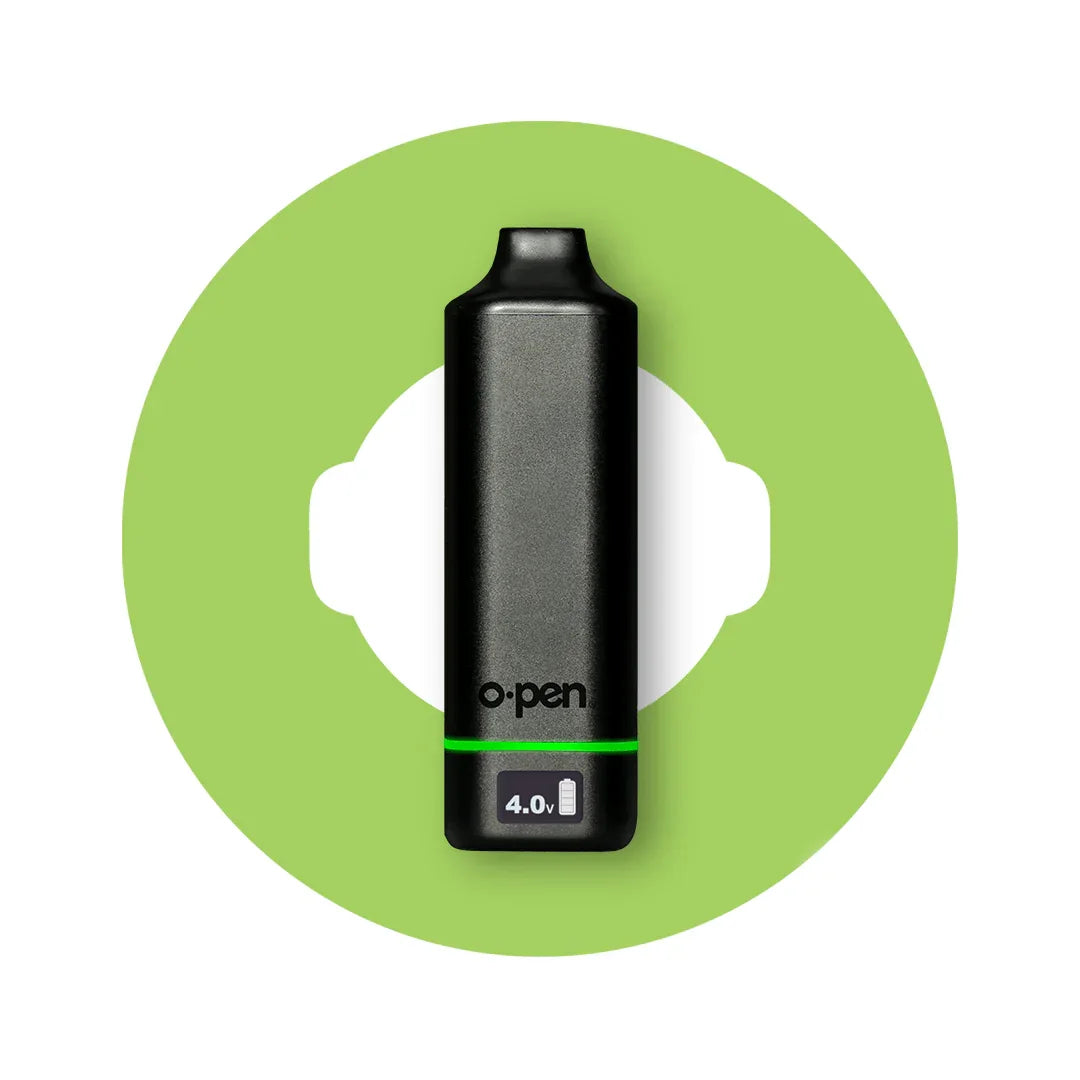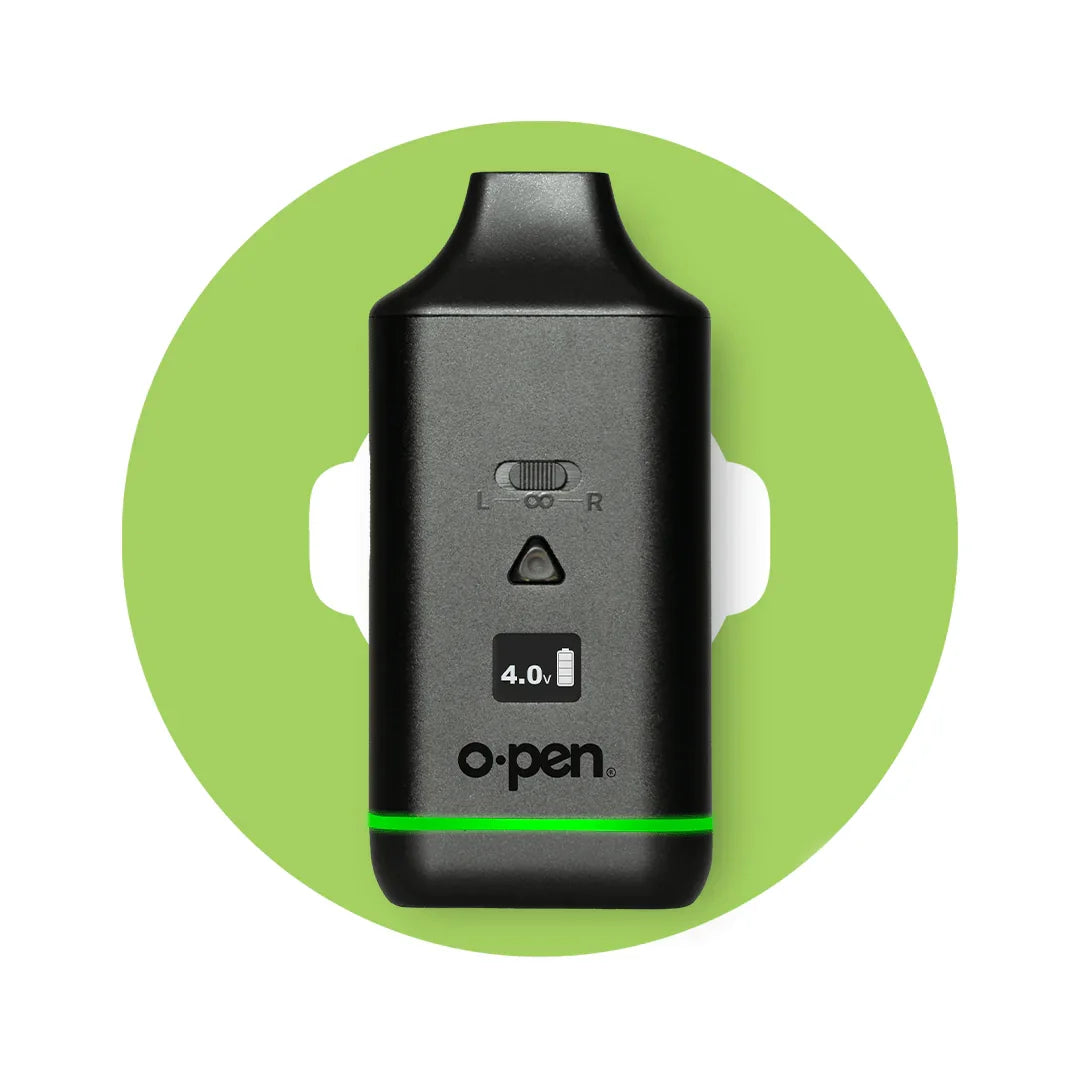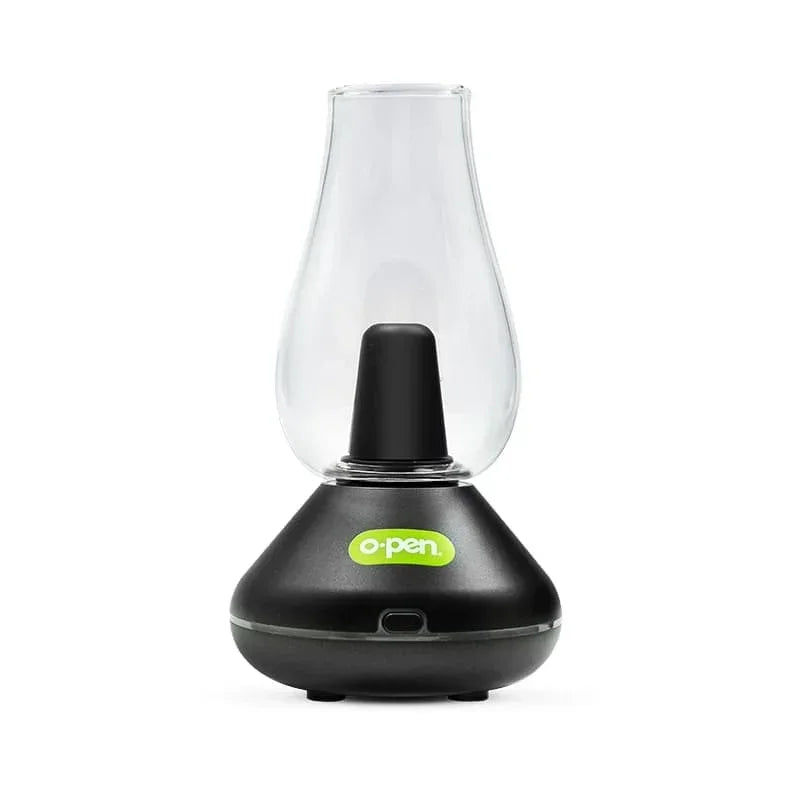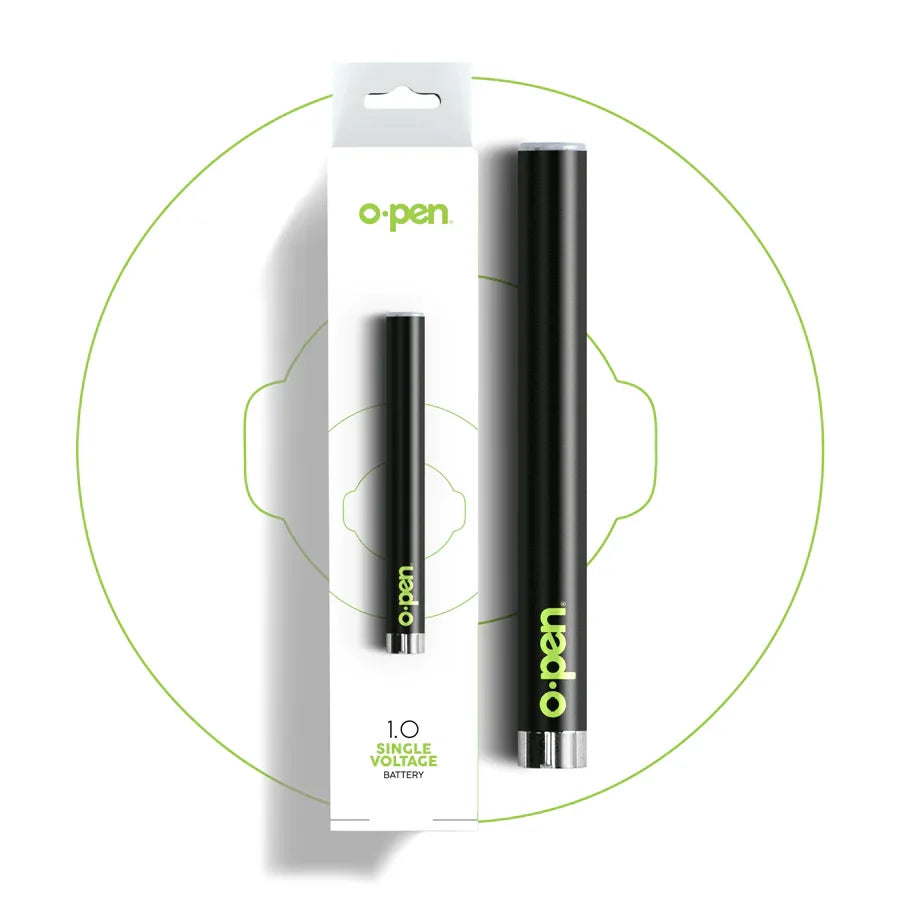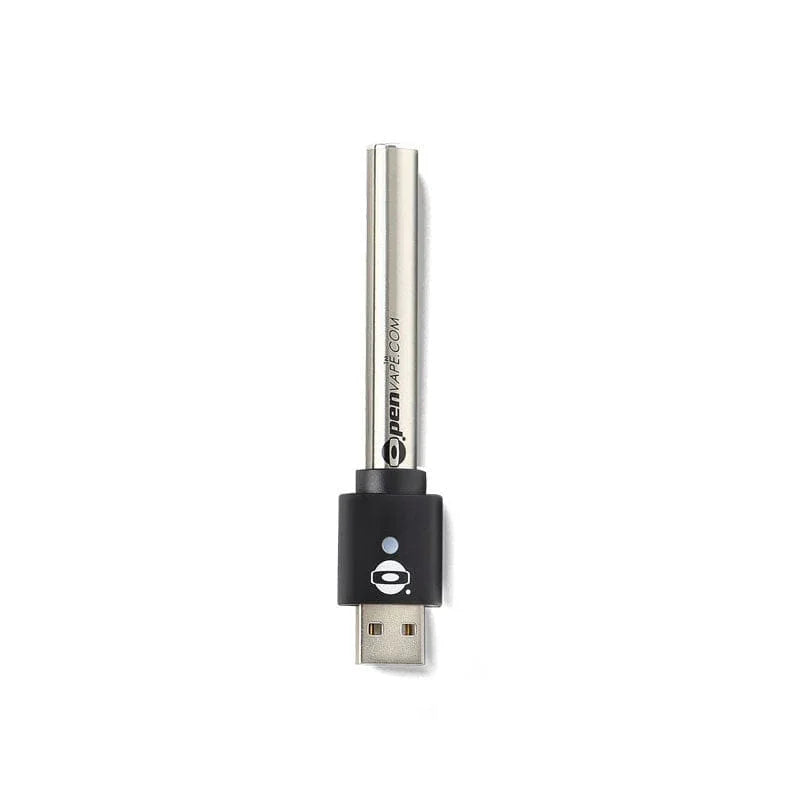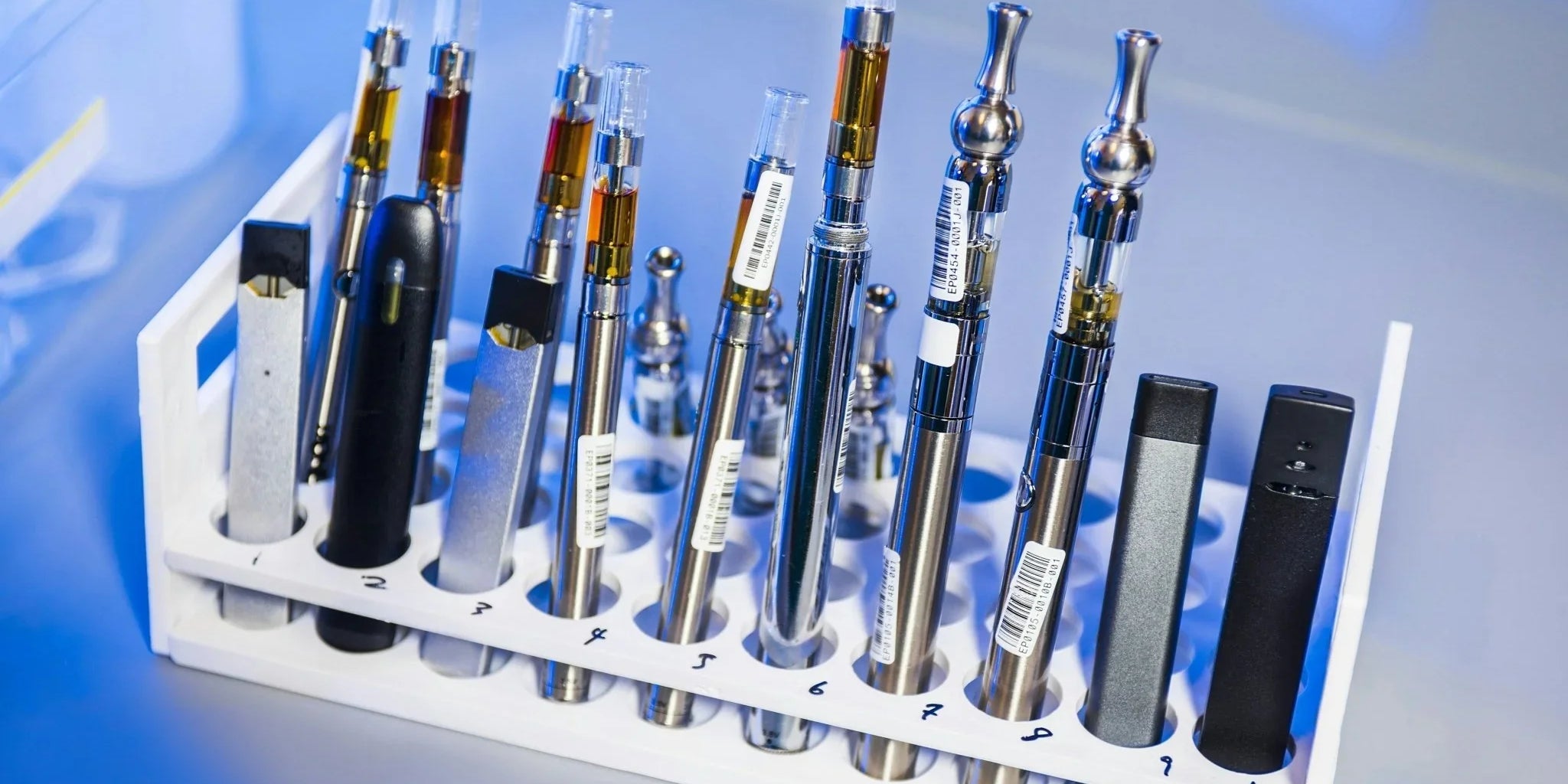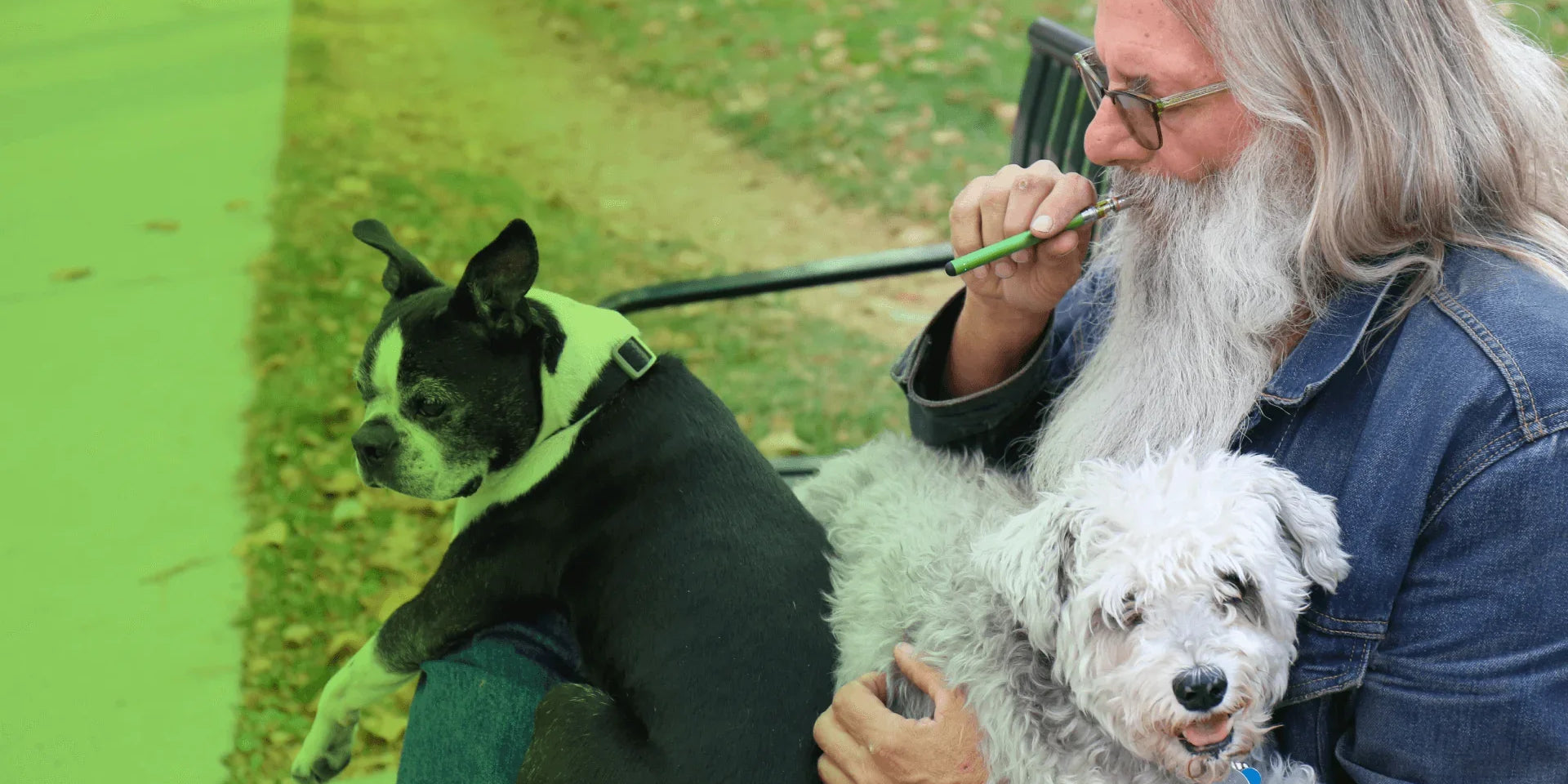The History of 4/20
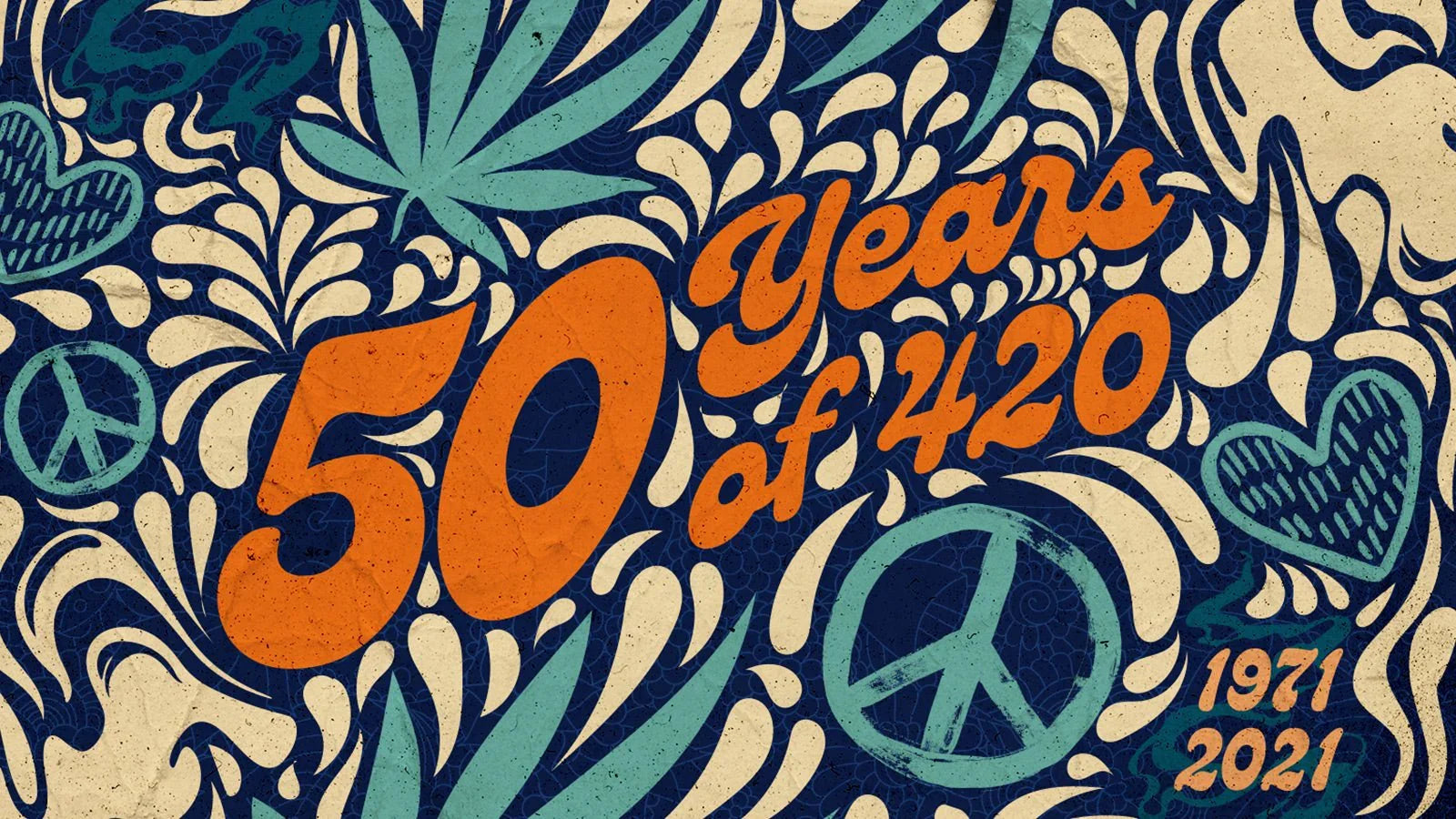
To celebrate the 50th anniversary of the international cannabis holiday known simply as “420,” we’ve compiled a comprehensive history of cannabis in the United States. Join us on a journey through the last century decade by decade and learn the meaning of marijuana in America, including the real story behind “420,” how 420 came to be associated with weed and what it really means.
In this article you will learn:
- 1500s - 1900s: Hemp Beginnings
- 1910s: Growing Popularity
- 1920s: Roaring Weedies
- 1930s: Jazz Joints
- 1940s: Hemp for Victory, But Not for Smoking
- 1950s: Beatniks and Buds
- 1960s: Culture of the Counterculture
- 1970s: “Flower” Power
- What Does 420 Really Mean?
- Myths About 420
- 1980s: The War on Drugs
- 1990s: The Fight for Medical Marijuana
- 2000s: Road to Legalization
- 2010s: Cannabis Advances
- 2020s: Modern Marijuana
- How to Celebrate 420 in 2021
The Spanish brought cannabis plants to the new world in the mid-1500s with the intention to grow hemp as a crop. Hemp provided a reliable and renewable resource for strong fibers that could be used for clothes, bags, and most importantly, for the rigging needed on ships.

Hemp ropes retain durability despite wet and salty environments, naturally resists decay, and is adaptable to cultivation in various conditions. These qualities made cannabis an important crop for Imperialist and sea-faring cultures. More than 120,000 pounds of hemp rope were used to make the rigging for America’s oldest naval ship the U.S.S. Constitution, also known as “Old Ironsides.” Ship captains were ordered to widely disseminate hemp seeds to help make hemp fibers accessible for repairing sails and rigging.
By the mid-1600s, hemp had become an essential part of the New England colonies’ economy. In 1619, Virginia passed a law that actually required every farmer to grow hemp, and was even used as legal tender in Pennsylvania, Virginia and Maryland. While most was exported to England in the form of ropes, cloth, canvas, sacks, and paper.
Speaking of paper - the first drafts of the Declaration of Independence were written on hemp paper.
Around the same time, Brazil’s first African slaves brought cannabis plants with them to the sugar plantations. The slaves were allowed to plant cannabis between rows of sugarcane, and to smoke the leaves between harvests.
These cannabis plants, while from the same foliage family, were a psychoactive variety of cannabis from the plants already being farmed by Brazil’s neighbors to the north. While hemp cultivated for fiber contains small amounts of THC and other cannabinoids, it’s usually not enough to generate any noticeable effects. For early America, hemp’s main purpose was a commercial cash crop.
This doesn’t mean that cannabis’ medicinal and intoxicating qualities were unknown in British America. In 1621, English scholar and clergyman Robert Burton listed marijuana as a treatment for ‘melancholia’ or depression.

By 1840, cannabis based medicines could be found in U.S. pharmacies, and from 1850 - 1937 marijuana was widely available throughout the U.S. as a medicinal drug, easily purchasable over the counter at pharmacies and general stores. In 1906, the Pure Food & Drug Act required that labels of over-the-counter medicines clearly state whether they contained cannabis or not.
During the Industrial Revolution towards the end of the 19th century, steam ships began to replace sailing ships and the need for hemp began to wane. By 1890, cotton replaced hemp as America’s major cash crop. Since hemp cultivated for its fibers does not contain the same chemical or psychoactive cannabinoids, there wasn’t much use for hemp farming at the time.
Yet around this time another way to use cannabis was making its way into America.

Popular books such as Arabian Nights and The Count of Monte Cristo detailed the hashish highs common in the Middle and Far East, which started the trend of cannabis experimentation among intellectuals during the mid-19th century.
This freedom of curiosity, though, wasn’t enjoyed by working class people until groups of migrant workers introduced cannabis to the common laborer. Immigrants to the Southwest fled the Mexican Revolution of 1910-1911, bringing cannabis plants with them, along with the popularization of recreational cannabis use. Cannabis was growing off the farm and beyond the druggist’s apothecary, as everyday workers used marijuana as a means to unwind at the end of an arduous workday.
 In the 1920s, recreational cannabis was growing as a fine companion in the underground party scene becoming just as popular in the speakeasy as whisky in a teacup. In fact, The Volstead Act of 1920 raised the price of alcohol in the U.S., making marijuana an even more attractive alternative. “In some respects, the [widespread] use of marijuana may have been an ironic and unintentional outcome of Prohibition.” - Barney Warf, Professor at University of Kansas.
In the 1920s, recreational cannabis was growing as a fine companion in the underground party scene becoming just as popular in the speakeasy as whisky in a teacup. In fact, The Volstead Act of 1920 raised the price of alcohol in the U.S., making marijuana an even more attractive alternative. “In some respects, the [widespread] use of marijuana may have been an ironic and unintentional outcome of Prohibition.” - Barney Warf, Professor at University of Kansas.  Recreational marijuana use soon spread from the speakeasies to the jazz clubs, and was particularly popular among the black jazz community and ‘hepsters.’ Famous jazz singer Cab Calloway even wrote a hit tune about a comical conversation with someone high, Reefer Man. Famous singer Louis Armstrong was another lifelong fan of the herb, which he called “gage.”
Recreational marijuana use soon spread from the speakeasies to the jazz clubs, and was particularly popular among the black jazz community and ‘hepsters.’ Famous jazz singer Cab Calloway even wrote a hit tune about a comical conversation with someone high, Reefer Man. Famous singer Louis Armstrong was another lifelong fan of the herb, which he called “gage.”
While Prohibition was repealed during the Great Depression, lawmakers quickly found a new target in cannabis. While some were concerned about the potential harm of the intoxicating effects of marijuana, the primary reason was for taxation and regulation.
Another motive was that it created the opportunity to target marginalized social and ethnic groups, since recreational marijuana was being used most among Mexican and Black communities. Post-prohibitionists painted cannabis (and the people who used it) as a threat to a country already crippled by the recent Great Depression. A number of dubious research papers linked cannabis consumption with violence, crime, and other socially deviant behaviors, primarily committed by “racially inferior” and “underclass” communities. By 1931, 29 states had outlawed marijuana and in 1937 the Marijuana Tax Act was passed, in essence making the cannabis plant illegal in the United States.
In 1936, the propaganda film Reefer Madness was released in a further effort to undermine public opinion of cannabis. The fictionalized story tells the tale of three drug dealers that corrupt innocent teenagers with “reefer cigarettes,” luring them to their demise through wild parties and Jazz music. Now viewed as a humorous caricature of propaganda film, Reefer Madness nonetheless evidences the dichotomy of cannabis culture during the 1930s.
In less than a century, cannabis went from being a respectable crop, a widely available medicine, and a popular tonic to completely illegal.  While recreational use of cannabis was banned, industrial hemp use was experiencing a renaissance. During World War II, hemp was critical for producing marine roping, parachutes, and other military items. The U.S. Department of Agriculture launched its campaign Hemp for Victory, offering free hemp seeds and draft deferment for farmers that would grow the much needed hemp. By 1943, the American farmers registered in the program reported harvesting 375,000 acres of hemp. A central part of the USDA’s campaign was the film, with the same name, becoming the first American documentary about cannabis.
While recreational use of cannabis was banned, industrial hemp use was experiencing a renaissance. During World War II, hemp was critical for producing marine roping, parachutes, and other military items. The U.S. Department of Agriculture launched its campaign Hemp for Victory, offering free hemp seeds and draft deferment for farmers that would grow the much needed hemp. By 1943, the American farmers registered in the program reported harvesting 375,000 acres of hemp. A central part of the USDA’s campaign was the film, with the same name, becoming the first American documentary about cannabis.
While pro crop cannabis campaigns filled the theaters, a different type of marijuana news was hitting Hollywood. In 1948, movie star Robert Mitchum (Cape Fear, Night of the Hunter) was arrested and sentenced to two months in prison after being caught smoking a joint at a Los Angeles party, making him among the first celebrities ‘busted’ for marijuana.
While respect for cannabis as an industrial crop blossomed yet again, an interesting study by the New York Academy of Medicine hoped to reverse negative perceptions of cannabis from the previous decade. In the 1944 La Guardia Report many misconceptions against marijuana were exposed as false or exaggerated.
For example, the La Guardia report was able to prove that cannabis was not a “gateway drug” that led to other substances, or that marijuana did not incite users to commit violent acts. Additionally, the report found a number of contradictions in previous anti-cannabis research which undermined many of marijuana prohibitionists’ ideas.
Five Findings of the La Guardia Report:
• The practice of smoking marihuana does not lead to addiction in the medical sense of the word.
• The use of marihuana does not lead to morphine or heroin or cocaine addiction and no effort is made to create a market for these narcotics by stimulating the practice of marihuana smoking.
• Marihuana is not the determining factor in the commission of major crimes.
• Marihuana smoking is not widespread among school children.
• Juvenile delinquency is not associated with the practice of smoking marijuana.
During the 50s, a time of ‘wholesome American values,’ Leave it To Beaver, “pearls and penny loafers,” the counterculture Beat Generation movement began to rise. The Beatniks traded conventional societal norms for a free-spirited, artsy, Bohemian lifestyle that included experimenting with drugs, particularly marijuana.
In an effort to control these movements, The Boggs Act (1952) and the Narcotics Control Act (1956) were voted into law. These acts set mandatory prison sentences for drug offenses, including marijuana. Even a first-time marijuana possession charge carried a minimum sentence of 2-10 years in prison and a fine of up to $20,000 (which would be just over $190,000 in today’s money!)  With the start of a new decade, a more lenient attitude towards marijuana was developing in tangent with an evolving political and cultural climate. Cannabis was no longer confined to lower socioeconomic levels, expanding to the white middle-class. Marijuana use and culture became a symbol of rebellion against authority. Meanwhile, the on-going Cold War, the Cuban Missile Crisis, and President JFK’s assasination contributed to a general feeling of government distrust.
With the start of a new decade, a more lenient attitude towards marijuana was developing in tangent with an evolving political and cultural climate. Cannabis was no longer confined to lower socioeconomic levels, expanding to the white middle-class. Marijuana use and culture became a symbol of rebellion against authority. Meanwhile, the on-going Cold War, the Cuban Missile Crisis, and President JFK’s assasination contributed to a general feeling of government distrust.
Cannabis became a pivot point for these emotions. While the government relentlessly touted the dangers of marijuana, 60s youths were first-hand evidence that such claims were false. This led many to wonder… “If marijuana prohibition is based on blatant falsehoods, are other policies just as arbitrary, capricious, and groundless?” (Project CBD)
While not being used in a strictly medicinal manner, cannabis was being used to self-soothe during uncertain times, particularly amongst angst ridden youth. “The need to self-medicate symptoms of adolescent angst is much more important than simple youthful hedonism,” according to Dr. Tom O’Connell, who studied juvenile marijuana initiation and usage after serving as a captain in the U.S. Army Medical Corps during the Vietnam War.
Without understanding the endocannabinoid system and the how and why cannabis has an anti-anxiety effect, Baby Boomers were the first to so widely use marijuana as a method of managing stress. Such widespread use helped cannabis become part of mainstream culture again...although this time would be more divisive than ever.
Hippie Weed - Less Potent Than the Cannabis of Today?
A longstanding rumor centered on this decade is that the marijuana of the 60s, aka “hippie weed,” is far less potent than the cannabis today. However, this belief seems more rooted in hand-me-down conventional wisdom than actual data. Indeed, collecting strains and measuring THC percentages was a difficult task considering that it was illegal. Another roadblock to an accurate THC assessment was that the main method for quantifying cannabis’ potency was a process called gas chromatography, which ends up not being a reliable way to check cannabinoid concentrations. This calls into question the feeble results suggesting a possible increase in potency over time. “In other words, it's difficult if not impossible to classify average potency in a way that can be tracked meaningfully over time,” writes The Atlantic.
Yet, despite any defining data or clear evidence, it’s not unreasonable to believe that cannabis is getting stronger today, thanks to advances in agricultural science and the consumer’s desire for increased potency. Either way, the thought that cannabis is stronger now than in the 60s is one of modern anti-marijuana movement’s favorite talking points.  The 1970s amplified the nation’s opinion on marijuana, be it positive or negative.
The 1970s amplified the nation’s opinion on marijuana, be it positive or negative.
In 1970, President Nixon signed the Controlled Substances Act as part of his campaign against drugs, or as President Nixon put it, the “public enemy number one.” More than a political soundbite, he backed those words with increased federal funding for various drug control agencies and established the Drug Enforcement Agency (DEA). He also instituted mandatory prison sentences for drug related offenses. While it’s not a new idea for authorities to use drug laws against undesired minorities or fringe communities, in 1994 Nixon’s domestic policy advisor John Ehrlichman was quoted claiming that Nixon’s war on drugs was actually a blatant war on blacks and anti-establishment groups. “By getting the public to associate the hippies with marijuana and blacks with heroin, and then criminalizing both heavily, we could disrupt those communities,” Erhlichman told journalist Dan Baum.
While there’s debate on the factualness of this claim, was racism the sole motivation behind Nixon’s anti-drug policy? No. Nixon’s war on drugs was largely a “public health crusade” led by a man who personally despised drugs.
Part of the evidence for this view is that Nixon’s policies did not focus solely on criminalization, but also public-health initiatives for drug abuse prevention and rehabilitation, including medication-assisted treatment. "Enforcement must be coupled with a rational approach to the reclamation of the drug user himself," Nixon told Congress in 1971. "We must rehabilitate the drug user if we are to eliminate drug abuse and all the antisocial activities that flow from drug abuse."
Whatever the motives, Nixon’s policies disproportionately impacted black and minority communities, a recurring problem with cannabis control legislation.
Pot Protests
To counter the crackdown against cannabis as part of the war against drugs, social protests start to become more popular.
For example, after American poet, writer and political activist John Sinclair was sentenced to prison for the possession of two joints, Michiganians gathered in Ann Arbor in April 1972, protesting the law in general and Sinclair’s arrest in particular. This gathering instituted the first Ann Arbor Hash Bash, celebrated every year on the first Saturday in April. (Festivities commence at noon, not 4:20 PM, FYI)
America again found itself divided on that subject of cannabis. Even lawmakers struggled on what to do with marijuana. Congress ended up repealing most of the mandatory penalties finding them to be unduly harsh and rooted in prejudices from earlier decades.
To help facilitate these changes, the National Organization for the Reform of Marijuana Laws (NORML) was also founded in 1970. In 1972 the bipartisan Shafer Commission was appointed by the direction of Congress to reevaluate marijuana laws. The commission recommended that personal use of marijuana be decriminalized, however Nixon rejected their findings. Despite this, over the course of the decade 11 states voted to decriminalize and many others reduced penalties and sentences.
High Times is Born
 The magazine dedicated to the love of marijuana was founded in 1974 by Tom Forçade, a journalist known for initiating the use of “pie tossing” as a means of protest. The magazine was originally intended to be a single issue joke: a Playboy for stoners that got up close and personal with centerfolds of beautiful buds instead of bodacious bods.
The magazine dedicated to the love of marijuana was founded in 1974 by Tom Forçade, a journalist known for initiating the use of “pie tossing” as a means of protest. The magazine was originally intended to be a single issue joke: a Playboy for stoners that got up close and personal with centerfolds of beautiful buds instead of bodacious bods.
Forçade was a true weed enthusiast, as well as an avid marijuana smuggler. He included some of his best tips in articles such as “Best Smuggling Ships” and “How to Fly Low.” Tommy Chong of the famous Cheech & Chong cannabis comedy duo appeared on the cover 8 times (more than any other human).

While High Times blazed the trail for stoner literature, Cheech and Chong took the prize for stoner movie. Their 1978 feature film Up in Smoke became the quintessential portrayal of stoner culture, sparking dozens of appearances, cameos, and paradies.
In 2004, High Times attempted to change identity from cannabis centered content to a mainstream literary magazine...with disastrous results. After only a few months, they announced a return to their weed-y roots with a cannabis close up on the cover and the bold headline: “The Buds Are Back!”
The Real History of “420”
The story of 420 begins with five teens in San Rafael, California who often hung out by the wall outside their school, earning them the nickname ‘The Waldos.’ In autumn 1971, the Waldos were given a treasure map that was purported to reveal the location of a patch of orphaned cannabis plants. The owner was a Coast Guard member who could no longer tend his hidden crop, and it’s rumored that he himself provided the group the treasure map.

The Waldos began meeting at least once a week to attempt to decipher the map and find their cannabis treasure. The designated meeting spot? A Louis Pasteur statue outside their highschool. The designated time? 4:20 PM, a convenient time after practice since all the Waldos were athletes. Originally, the Waldos used the phrase “4:20 Louis” as a school hallway code to meet for the treasure hunt, but eventually the phrase was shortened to simply “4:20.”
One member, Steve Capper, says in an interview with the Huffington Post: “We’d meet at 4:20 and get in my old ‘66 Chevy Impala and, of course, we’d smoke instantly and smoke all the way out to Point Reyes and smoke the entire time we were out there. We did it week after week.”
While the Waldos never did find their ‘pot’ of gold, they did find the freedom to discreetly discuss marijuana without the knowledge of parents and teachers as the term ‘420’ took on a more general meaning. But how did a little secret between highschoolers grow into an international phenomenon?
Myths about 420’s origins
Police code for ‘weed-smoking in progress.’
Connected to Hitler’s birthday.
Bob Dylan’s refrain in the song “Rainy Day Women No. 12 & 35” (12 multiplied by 35 equal 420).
There’s 420 chemical compounds in cannabis. While scientists have identified “over 400,” they’ve never claimed a specific number such as 420.
4/20 was the day Bob Marley died (actual date May 11th).
The term originated from H.P. Lovecraft’s story, In the Walls of Eryx, in which the character encounters what seems to be a cannabis plant, then looks at his watch and finds the time to be 4:20 PM.
The Grateful Dead’s Role in 420’s History
The Waldo’s were well connected to the band. One’s (Mark Gravitch) father managed the Dead’s real estate, and another’s (Dave Reddix) was buddies with the Dead’s bassist Phil Leash, even managing a Grateful Dead sideband. The Waldos were often hanging out with the band and crew. “We’d always be backstage running around or on stage and, of course, were using those phrases,” says Capper. “When somebody passes a joint or something, ‘Hey, 420.’ So it started spreading through that community.”
High Times reporter Steven Bloom first heard the phrase during a Grateful Dead concert in Oakland, California, Christmas week 1990. One of the many ‘dead head’ hippies handed him a flyer that read: “We are going to meet at 4:20 on 4/20 for 420-ing in Marin County at the Bolinas Ridge sunset spot on Mt. Tamalpais.” The flyer briefly explained the meaning and history of the phrase. Bloom sent the flyer and story to High Times, and 420 was soon launched into a cannabis culture canon.
The Start of the Medical Marijuana Movement
During the 1970s, marijuana was both vilified and idolized, with a person’s stand representing more than an opinion of the plant itself. Cannabis was (and to some extent is) a cultural pivot point, used as both a symbol of authority and anti-authority, and counter-culture that evolved into its own culture. Between the dichotomy of these political and social issues, another group was ready to be heard.
After being arrested and prosecuted for growing his own plants on the porch of his Capitol Hill home, Robert Randall took his case to court. As a glaucoma sufferer, he presented a compelling argument that without the proven effects of marijuana, he would be blind. In 1976, the D.C. Superior Court found Randall not guilty, stating his “right to sight was greater than the state’s need to enforce the drug laws.”
Randall’s fight (and victory) is one of the catalysts for the medical marijuana movement. Randall went on to found ACT (Alliance for Cannabis Therapeutics) through which he continued to champion for the rights of cannabis patients. In 1981, the non-profit organization (along with the Washington D.C. law firm Steptoe & Johnson) worked to draft the first federal legislation providing allowances for marijuana’s use as medicine. Eventually, ACT merged with another cannabis activism organization, Patients Out of Time, which still operates today.
The tension between cannabis activism and the war on weed continued to escalate through the next decade.

“Just Say No”
Like the 420 holiday, First Lady Nancy Reagan’s famous anti-drug slogan also began in California. While visiting a school in Oakland in 1986, a young girl asked Reagan what she should do if someone offered drugs, to which the former First Lady replied, “Just say no.” These three simple words became the cornerstone of Reagan’s decades long crusade to end drug abuse among school aged children.
This passion against drugs was shared by her husband, President Reagan, who vowed to reprioritize the War On Drugs started the decade before by his predecessor Nixon. In 1986 (the same year Nancy Reagan spoke her famous line), President Reagan signed the Anti-Drug Abuse Act, which allocated $1.7 billion to anti-drug initiatives and agencies, and reintroduced mandatory prison sentences.
Another famous anti-drug campaign was founded in 1983 by the chief of the Los Angeles Police Department, Daryl Gates. The Drug Abuse Resistance Education program, known as “D.A.R.E.” paired students with a local police officer in a “Big Brother” style mentoring program with the focus of preventing youth drug use. Participants were required to pledge avoidance of drugs and gangs (a strong correlating factor to young drug use).
The program was wildly popular, being implemented in 75% of the schools in the United States, and still exists today, despite studies showing that D.A.R.E. has little actual impact on future drug use. The Department of Justice conducted a study in 1994 that indicated D.A.R.E. programs affected only a short term reduction in cigarette smoking, with little to no effect on alcohol or marijuana.
Effective or not, both “Just Say No” and “D.A.R.E” put marijuana use back on the general public's radar. Surveys conducted during this time period revealed that the percentage of people who considered drug use as “America’s number one problem” skyrocketed from 2% to 64%. These anti-drug initiatives also burned themselves into 80s pop culture (raise your hand if you ever owned a D.A.R.E. tee shirt).
Another criticism of Reagan’s War on Drugs is a recurring issue with drug legislation: unfair targeting of minorities.  The end of the 80s and start of the 90s saw Reagan’s War on Drugs continue into a new presidency, George H.W. Bush, who invested another $12 billion to continue federal drug initiatives. Meanwhile, activism to decriminalize cannabis and to make medical marijuana accessible likewise ramped up.
The end of the 80s and start of the 90s saw Reagan’s War on Drugs continue into a new presidency, George H.W. Bush, who invested another $12 billion to continue federal drug initiatives. Meanwhile, activism to decriminalize cannabis and to make medical marijuana accessible likewise ramped up.
The “Father of Legal Marijuana”
A notable figure in this fight is Dennis Peron, called the ‘‘father of legal marijuana” in California. Born in the Bronx, Peron joined the United States Air Force and eventually served overseas during the Vietnam War. A lifelong weed lover since 17, Peron even used marijuana during his stint in Vietnam, smuggling a hefty two pound stash home with him, carefully hidden in his military duffel.
After the war, Peron settled in San Francisco, California. Openly gay and living in an LGBTQ epicenter, Peron witnessed first-hand the horrors of the AIDS epidemic. During these early years, when treatments were new, limited and with misconceptions abound, few had access to medication or therapeutic relief. It wasn’t even until 1987 that the first USDA approved AIDS medication was released.
Peron saw that cannabis could help. “Wasting syndrome,” or “cachexia,” is the facet of AIDS that causes rapid weight loss, severe fatigue and weakness. Peron found that cannabis gave practical relief by stimulating the appetite, as well as easing physical pain and nausea. Cannabis also helped with depression, an inevitable psychological symptom of such a dreadful disease.

In an interview with Weedmaps News about the lack of AIDS medication and the connection to cannabis, Peron’s spouse John Entwistle Jr. said: “The drug that people did have was pot, and it helped. It helped with the appetite, it helped with nausea, and it helped with the depression, and that's a pretty big deal.”
“The drug that people did have was pot, and it helped. It helped with the appetite, it helped with nausea, and it helped with the depression, and that's a pretty big deal.”
- John Entwistle Jr., Weedmaps News.
Peron believed so strongly in the therapeutic benefits of cannabis that in the 70s he opened the Big Top Pot Supermarket...which was actually 11 rooms spanning the top two floors of a Castro District Victorian...where he illegally sold marijuana.
While Peron was able to distribute cannabis to thousands of San Francisco residents for a number of years, he wasn’t able to escape punishment forever. The Big Top was raided in 1978 and Peron was even shot in the leg by an undercover officer. Peron subsequently spent three months in the hospital, followed by three months in jail.
Despite that setback, the “supermarket” continued to thrive. Peron’s home was again raided in 1990 and Peron was charged with “marijuana possession with intent to sell.” While Peron was indeed selling and had intent to sell more, that night he had very little product on hand. At his trial six months later, Peron’s life partner Jonathan West testified that the four ounces of marijuana was actually his and all charges against Peron were dropped.
Such experiences combined with witnessing the decline of friends’ health, and knowing the powerful benefits of marijuana, sparked Peron’s inner activist. When Peron lost his love and partner West, however, he fully threw himself into the fight for legalization of medical marijuana. Peron eventually organized and co-authored the 1996 ballot known as Proposition 215, or the Compassionate Use Act, which argued for legal use of medical marijuana in the entire state of California. Proposition 215 passed with 79% of the votes.
Cannabis Buyers’ Club
That same year, Peron turned his illegal marijuana supermarket into the first public medical cannabis dispensary in the U.S., with the new name of San Francisco Cannabis Buyers Club. The club eventually had over 8,000 members, many of which were AIDS patients.
Another figure that helped open the doors to medical marijuana was patient-rights’ activist, aptly named Mary Jane Rathburn. As a volunteer for The Shanti Project (an organization that offered the first medical services to AIDS patients), Rathburn secretly gave pot-infused brownies to patients, which earned her the nickname “Brownie Mary.” Brownie Mary was eventually caught however she did not stop smuggling her cannabis confections. In 1992 Rathburn was again arrested for baking pot brownies.
Since a 68 year-old woman going to trial for baking weed treats in her nephew’s house was a story that gained a lot of attention, Rathburn and Peron decided to use her publicity as a way to draw attention to Proposition 215 and gain support for their cause. News coverage exploded, including footage of Peron illegally selling cannabis from his underground marijuana market. Dennis Peron and Brownie Mary braced themselves for further legal backlash. Surprisingly, however, they were able to operate without additional recourse. Even more surprising, according to Entwistle’s interview with Weedmaps, “Some local police officers were even advising patients in need to purchase from the club instead of street dealers.”
Despite the media attention, intense lobbying by activists such as Rathburn and Peron, and Proposition 215’s victory, California’s cannabis freedom did not last long. A federal judge closed the San Francisco Cannabis Buyers’ Club (and other dispensaries) in 1998. It would be nearly 20 years before cannabis was legal for adult use in California. 
 Weed in Entertainment
Weed in Entertainment
By the 2000s, the coverage regarding marijuana use made the topic less taboo. Weed culture again found itself in the mainstream. American rapper Afroman released the stoner anthem “Because I Got High,” which became so popular on the millennial downloading site Napster that he was signed to a record deal by Universal.
By the early 2000s That 70s Show had become popular. While 70s was a sitcom centered on cooky family life and relationships, it often cheekily depicted marijuana consumption. In 2005, a different side of cannabis was shown when the TV show Weeds hit living room screens.
Meanwhile, Harold & Kumar Go to White Castle was released in 2004. The plot of the film was entirely centered on the duo’s attempt to satisfy their marijuana induced cravings. A few years later, in 2008, another stoner classic, Pineapple Express came to theatres. The film (and its namesake cannabis strain) was wildly popular.
Everybody’s Doing It
At the turn of the new millenium, a number of celebrities came forward (or were “caught”) using cannabis. In 2003, Oscar winner Frances McDormand came out as a marijuana lover by gracing the cover of High Times magazine. Famous Olympian Michael Phelps was photographed smoking weed with a bong, which subsequently led to a loss of his deal with Kellog’s cereals and a three-month suspension from all swim competitions.

Perhaps most shocking of all, however, is a 2005 revelation by author Doug Wead. When interviewing his personal friend George W. Bush in the late 90s, the soon-to-be president, as much as, admitted to using marijuana, but that he didn’t want his children to follow his example.
George W. Bush was far from the only politician to try weed...some admitting with regret since they support anti-drug policies, others with pride while lobbying for legalization, and everyone in between.
By the 2010s, marijuana walked the fine line between illegality and popularity. Still on the fringe for mainstream America, a subtle yet steady shift towards normalization was discernible. In 2014, comedian Sarah Silverman shocked her interviewers on the Emmy Awards’ red carpet when showing them what she could fit in her tiny evening clutch...which included a cannabis vaporizer pen. “And this is my pot, my liquid pot,” Silverman said.
Besides adding to the list of ‘just another celebrity who uses weed,’ this brief exchange marked another, more significant advancement of marujuana: cannabis technology.
Until the early 2010s, cannabis users who wanted to inhale their high could either smoke in the traditional sense or smoke using a bong. Cannabis vaping was about to change that.
The cannabis tech revolution has some roots (not surprisingly) in Silicon Valley. Mark Williams, a founder of Firefly brand vaporizers, was a former product developer at Apple. Coincidentally, The New York times later called the Firefly “the iPhone of vaporizers.” Innovators from other industries also found ways to modify and improve the cannabis experience. The cannabis vape cartridge, however, took things even higher, so to speak…
The vape cartridge was more than a different method of smoking weed; it was an entirely new way to consume cannabis. At that time, two main pain points of consuming cannabis convenience and discretion. At O.pen, we made our mission to solve those problems, so we began what became over 100,000 hours of research and development. As one of the first to create a cannabis vape cartridge, it took that long to figure out what worked (and what didn’t).
While it took a bit of work to develop the right vape pen, just the concept of cannabis in a cartridge was exciting. Chris Folkerts, CEO of GreenCo., told Vice Magazine about his very first puff on a vape. While it didn’t get him high, the experience was still "probably the most powerful moment" of his life. "Holy shit," Folkerts recalled thinking to himself. "This just fucking digitized weed."
Vaping cannabis quickly became popular because it was convenient, easy to use, gentler on the lungs than traditional smoking, and, of course, discretion. Cannabis vape pens produce little to no vapor and low odor. Also, the slim, pen shape is super discreet...you can even fit one in your evening handbag, as Sarah Silverman demonstrated. As extraction methods improved, so did the flavor and enjoyment of cannabis vape pens. Marijuana vape pens are the most popular of all processed cannabis products sold.
The cannabis industry exploded with new brands and new products, and by the end of the decade legal cannabis sales were estimated to be over $200 billion. The value of the industry itself is projected to over $50 billion over the next five years.
Just Cannabis
Despite booming success, money being made (and taxed), many marijuana “criminals” are still serving sentences for low-level possession. Even if never incarcerated, a serious charge on their criminal record negatively impacts educational and employment opportunities. In any case, marijuana offenders are essentially being punished for the same work that is making companies rich right now. Ironically, by having a criminal record they are banned from working in the cannabis industry.
Like previous marijuana legislation through the decades, whether intentionally or not Black, Latino and minority communities faced the brunt of the punishment. Black Americans are four times more likely to be arrested for marijuana possession than Whites. Politico magazine reported that in 2017 people of color comprised 86% of marijuana arrests.
Conversely, the highly profitable legal cannabis industry is almost entirely owned (99%) by Whites. Such shocking disparity highlights underlying socioeconomic and racial injustice issues linked to cannabis regulation.
Growing awareness of these problems within the cannabis industry ecosystem has generated another facet of social justice. In the first step towards change, organizations are developing that lobby for fair cannabis legislation and more opportunities for people of color to enter the legal cannabis industry.
For example, the Last Prisoner Project works to reverse fundamentally unjust cannabis laws while supporting those currently affected. Founded by long-time cannabis lover and activist Steve Deangelo, who has both fought for both medical marijuana rights and defended recreational use. In fact, Deangelo feels the distinction between these two intentions is a “false dichotomy and a false choice.”
In an interview with CannaInsider, Deangelo goes on to say: “I see most people using cannabis for wellness purposes, and I define wellness very broadly. It certainly includes people who are using cannabis to eliminate their cancer tumors or to control seizures from epilepsy. It includes people who are managing their insomnia or their anxiety or their depression or their chronic pain. But it also includes things like extending your sense of patience and enhancing your appreciation for the flavor of food or the sound of music, sparking your creativity, opening yourself to a spiritual experience, waking up your sense of play or your sense of humor, enhancing sensuality and intimacy.”
Like many activists, Deangelo hopes that America’s perception of marijuana will continue to evolve from an illicit drug to natural medicine to an overall wellness enhancer. As we move into a new decade, that advancement seems possible.  Cannabis’ thriving industry, groundbreaking medical research, and growing supporters who’ve come out of the “marijuana closet” have all helped open minds to its use. The number of medical marijuana patients continues to grow, with roughly 1.5% of the American population registered as medical marijuana patients.
Cannabis’ thriving industry, groundbreaking medical research, and growing supporters who’ve come out of the “marijuana closet” have all helped open minds to its use. The number of medical marijuana patients continues to grow, with roughly 1.5% of the American population registered as medical marijuana patients.

Qualifying medical conditions have expanded beyond glaucoma and cancer as more research proves the health benefits of cannabis. A recent study took a deep dive into current cannabis evidence, as well as recommendations for future research. The Health Effects of Cannabis and Cannabinoids shows how cannabis not only helps fight and prevent disease, but also supports the overall function of a healthy human body.
Increased understanding of the endocannabinoid system reveals that our bodies are literally built to interact with the cannabinoids found in cannabis. (For more information, check out the blog Everything You Need to Know About Cannabinoids.) Such insight has spurred the use of cannabis to enhance wellness rather than treating disease only. Cannabis consumers often seek more than just the euphoria of being “high,” but use marijuana as a tool to boost creativity, focus, mindfulness, and so on. Microdosing and exploring blends of cannabinoids and terpenes allow users to incorporate cannabis into a healthy daily routine.
Since cannabis is used more and more to enhance rather than inhibit function, non strictly medical use is often relabeled from “recreational” to simply “adult use,” a term that better reflects the multiple ways cannabis can be used and enjoyed.

According to a 2019 government survey on drug use, an average of 28.7% of adults regularly use marijuana--that’s nearly one third of the U.S. population! Despite such widespread use and continuing normalization, marijuana is still federally illegal. According to the FBI’s crime statistics, cannabis comprises 35% of all U.S. drug related offenses. Perhaps this decade, home of 420’s 50th anniversary, will change that.
- The clocks in the pawn show of Pulp Fiction are set to 4:20
- The 1939 short story from horror master H.P. Lovecraft, In the Walls of Eryx, seems to feature cannabis plants as part of an alien landscape. “Curious mirage-plants” are described as having a “shaggy stalk,” “spiky leaves,” and “mottled blossoms” that were known to produce mysterious dreams. After the protagonist’s encounter with these plants, he looks at his watch “and was astonished to find that the time was only 4:20.” While this story is a more obscure myth of 420’s origins, it’s still an interesting coincidence.
- According to Paul McCartney, Bob Dylan gave the Beatles their first joint in 1964. Dylan had mistaken the lyrics from I Want to Hold Your Hand “I can’t hide” as “I get high.” When the Beatles corrected Dylan and said they had never tried marijuana before, Dylan promptly gave them some to smoke.
- Price-Is-Right game show contestant Evan Goding got the audience going by answering “420” to every round.
While grooving at a jam band concert or attending one of the many 420 festivals may not be possible in 2021, there’s plenty of 420 fun to be had safely at home. Here’s how to prepare for 420’s 50th Anniversary.
Room to Chill.
One key to an enjoyable cannabis experience is one’s setting or surroundings. Arrange your space to enjoy the day and get into a cannabis celebratory mood. Assemble furniture so there’s plenty of comfy spots for guests. Use floor pillows to expand the seating area to accommodate any “couch lock.” Check out Firefly’s blog Set & Setting: Mindfully Creating a Great Cannabis Experience for more tips on creating the perfect cannabis trip.
Light Up.
Use lighting to create a chill ambiance. Switch out bright light bulbs to lower wattage and soft white for a more relaxing vibe.
Secure the Snacks.
Be sure to have plenty of munchie approved food and beverages readily available.
In the Weed, Not the Weeds.
Up for some cannabis infused cooking? Here’s a simple step-by-step guide to making your own cannabis butter. This easy cannabis butter recipe has little to no “green” flavor tasteless and can be used as a one-to-one replacement in any recipe.
1. Decarboxylate. Decarbing simply means using heat to activate dormant THC so its psychoactive effects can be felt. Place dried cannabis flower in an oven safe dish and bake at the lowest heat setting.
Oven Temp
200°
250°
275°
Bake Time
1 hour
40 minutes
30 minutes
2. Infuse. Combine the baked flower with melted butter and allow to infuse for 4 hours. A slow cooker on low is the easiest, but it can also be done stovetop on low or simmer setting. The infusing process can cause 15-25% of the butter to evaporate, so make sure enough is prepared for a recipe.
3. Store. Store in an airtight container in the refrigerator to keep the weed butter fresh and potent.
4. Get baked. Use your cannabis butter (we suggest cookies) in any recipe and enjoy!
Rolling Stoned.
Create an awesome 420 playlist. Unsure where to start? Check out these 420 songs on Marijuana.com’s Spotify playlist.
Joint Participation.
Plan for some fun and easy 420 themed activities, such as cannabis games and a marijuana movie marathon.
Weed Themed Games
Cards Against Humanity: Weed Pack expansion pack.Ducking High, from What Do You Meme?
Take A Hit card game.
420-The Card Game, a weed party game.
Weed-opoly, “Start at Start, End at Stoned.”
Ultimate 420 Movie List:
NME.com compiled this list of ten “Best Films to Get Baked On 4/20.”
- Cats (2019)
- Smiley Face (2007)
- Reefer Madness (1936)
- Dazed and Confused (1993)
- The Wizard of Oz (1939)
- Friday (1995)
- Harold and Kumar Go To White Castle (2004)
- Pineapple Express (2008)
- The Beach Bum (2019)
- The Big Lebowski (1998)
The Guest of Honor
Priority number one for any 420 party, of course, is cannabis itself. So make sure your carts are full, concentrates ready, and flower flowing!
Happy 420!
Cannabis in America has a rich, sometimes sad, often surprising and always inspiring history. On this 50th anniversary of marijuana’s most notable holiday, we plan to reflect on the story of 420--not just the day, but the meaning of the day and the many people who paved the way for us to enjoy a puff right now.
Whatever your plans this 420, O.pen wishes you happy and safe celebrating. To celebrate all that marijuana has been and all that it will be, head to our store and grab a limited edition O.pen 4.20 vape battery where a portion of proceeds will go to Last Prisoners Project, an organization dedicated to fighting criminal injustice and reimagining drug policy.
SOURCES:
- 10,000-year History of Marijuana use in the World
- History of Marijuana
- Farm Collector
- Hemp in Early America
- Frontline, PBS
- What’s the difference between hemp and marijuana?
- My Mistress Melancholy
- Legalized Marijuana: Canada Comes Round to the Wisdom of Ages
- The Hazy History of “420”
- 420 Meaning: The True Story Of How April 20 Became ‘Weed Day’
- “420” Forefathers, the Waldos, Launch Web Site Laying Claim to Legend
- Wake ‘N’ Bake flyer from Grateful Dead concert
- Marijuana (Weed) History and Facts
- Here's the Real Reason We Associate 420 With Weed
- Cannabis, a complex plant: different compounds and different effects on individuals
- The Real Origin of 420 (and 4/20, and 4:20) Lies With a Bunch of High School Kids
- In the Walls of Eryx
- The Complicated History of Cannabis in the US
- Beat movement: American literary and social movement
- A Social History of America’s Most Popular Drugs, PBS
- The Volstead Act
- High Points: An Historical Geography of Cannabis
- Vice Magazine
- Marijuana's Biggest Pop Culture Moments
- Was Nixon's war on drugs a racially motivated crusade? It's a bit more complicated.
- Public Enemy Number One: A Pragmatic Approach to America’s Drug Problem
- Crime Data Explorer
- Medical Marijuana Patient Numbers
- The Boggs Act & Mandatory Minimums
- The Pure Food and Drug Act
- Reefer Madness, IMDB
- Findings of the 1944 La Guardia Report
- How the La Guardia Committee Report Helped Debunk the Gateway Theory
- The LaGuardia Report: Exploration of a Chronic Issue in American Drug Policy
- Marijuana For The Masses
- Was Marijuana Really Less Potent in the 1960s? How incomplete government data encourages a pervasive pot myth
- Gas Chromatography – How a Gas Chromatography Machine Works, How To Read a Chromatograph and GCxGC
- Is Weed Really Stronger Now Than It Was Back in the '60s?
- The first report of the National Commission on marihuana (1972): signal of misunderstanding or exercise in ambiguity.
- A history of marijuana in the United States
- War on Drugs
- Dennis Peron, 'father' of legal medical cannabis in California, dead at 72
- We Wouldn't Have Legal Weed Without These LGBTQ Activists
- Dennis Peron, Early Medical Marijuana Advocate, Dies at 71
- Stoner movies: the best films to get baked to on 4/20
- Oakland art exhibit highlights the history of California’s cannabis movement
- Afroman On The Success Of ‘Because I Got High’ And The Importance Of Going Green
- BBC News: Bush hinted at use of marijuana
- Emmys 2014: Sarah Silverman's pot-filled e-cigarette brings marijuana into the 21st century


